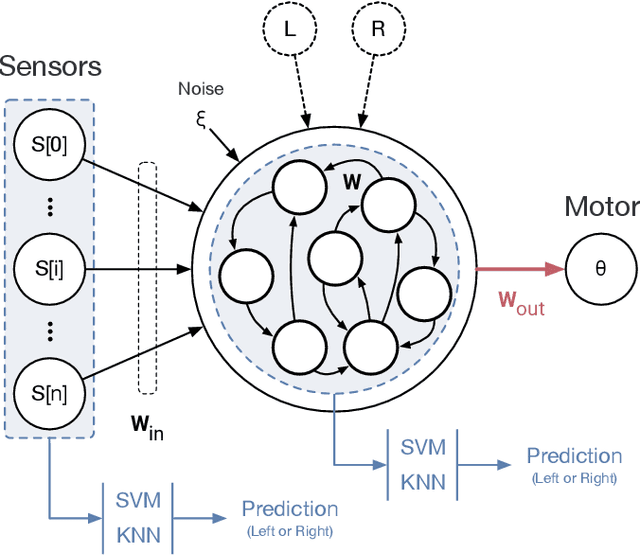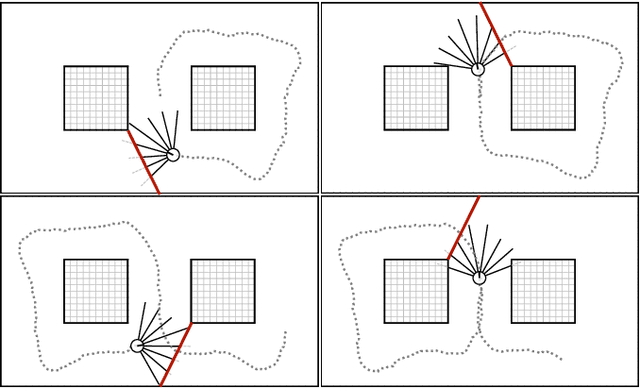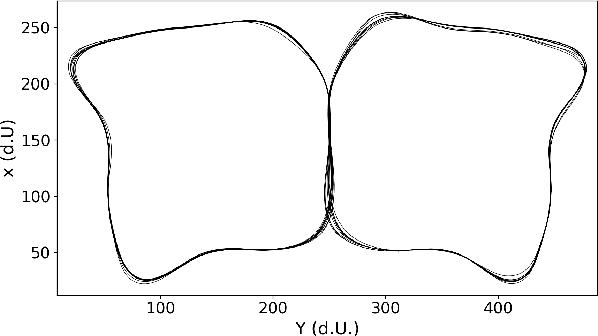Thomas Boraud
Exploring the role of structure in a time constrained decision task
Jan 19, 2024Abstract:The structure of the basal ganglia is remarkably similar across a number of species (often described in terms of direct, indirect and hyperdirect pathways) and is deeply involved in decision making and action selection. In this article, we are interested in exploring the role of structure when solving a decision task while avoiding to make any strong assumption regarding the actual structure. To do so, we exploit the echo state network paradigm that allows to solve complex task based on a random architecture. Considering a temporal decision task, the question is whether a specific structure allows for better performance and if so, whether this structure shares some similarity with the basal ganglia. Our results highlight the advantage of having a slow (direct) and a fast (hyperdirect) pathway that allows to deal with late information during a decision making task.
From implicit learning to explicit representations
Apr 05, 2022



Abstract:Using the reservoir computing framework, we demonstrate how a simple model can solve an alternation task without an explicit working memory. To do so, a simple bot equipped with sensors navigates inside a 8-shaped maze and turns alternatively right and left at the same intersection in the maze. The analysis of the model's internal activity reveals that the memory is actually encoded inside the dynamics of the network. However, such dynamic working memory is not accessible such as to bias the behavior into one of the two attractors (left and right). To do so, external cues are fed to the bot such that it can follow arbitrary sequences, instructed by the cue. This model highlights the idea that procedural learning and its internal representation can be dissociated. If the former allows to produce behavior, it is not sufficient to allow for an explicit and fine-grained manipulation.
 Add to Chrome
Add to Chrome Add to Firefox
Add to Firefox Add to Edge
Add to Edge